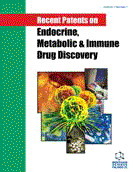Abstract
Neutrophils Extracellular Trap (NET) is composed of nuclear chromatin with hyper segmentation of nuclear lobes, citrullination of histone-associated DNA and mixing with cytoplasmic proteins including the enzyme myeloperoxidase. It is believed that neutrophils trap can kill microorganisms and constitutes a new form of innate defense. However, in some conditions, NET formation may be detrimental to the organism due to its association with autoantibody formation. Thus, NETs can be beneficial or detrimental depending of the DNA clearance recent registered patents describing the processes, products, methods and therapeutic indications of the neutrophil extracellular trap (NET) phenomenon have been reported. The patents US8710039; EP2465536; EP2651440; US20130302345; US20140099648; US20130183662; WO2012166611; and RU2463349C2, related to NETosis, suggest an association between NET formation and autoimmunity. However, its function is still not fully understood. Some parasites have learned to escape from NET using nucleases. NET persistence could be due to a possible enzymatic inhibition as suggested in Grabar´s theory for explaining the induction of physiologic or pathologic autoantibodies. In the present mini-review NET persistence due to impairment in the homeostasis clearance of DNA is discussed.
Keywords: Autoantibodies, detrimental tissular effect, DNA, homeostasis, Grabar´s theory, neutrophils extracellular trap.
 40
40





















